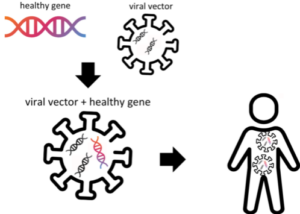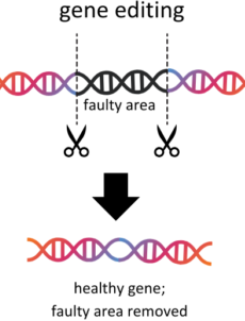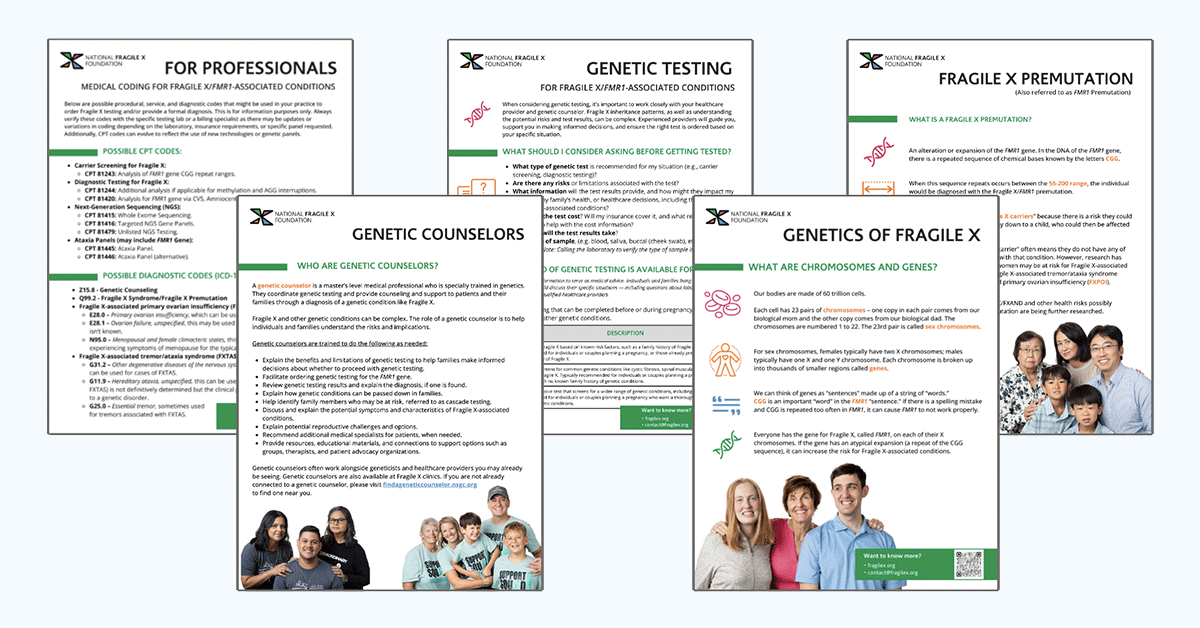In a previous post, we explored gene therapy on a high-level. In this blog, we dive a little deeper and look at examples of different types of successful gene therapies that are being used today.
Remember
- There are many different types of gene therapy treatments, some of which are still very early on in their development journey.
- To date, there are no gene therapy treatments available for Fragile X syndrome. However, the successes seen in the examples below provide hope and guidance for breakthroughs in gene therapies in FXS in the not-so-far future! And yes, gene therapies are in development for Fragile X.
- The term “gene therapy,” in its broadest definition, encompasses a variety of different types of potential treatments that act by adding, subtracting/reducing, or changing part of the disease-causing DNA, mRNA, or protein.
- There are many types of gene therapy currently being used and studied. The four main types of gene therapy today include:
- Viral vector based
- Anti-sense oligonucleotides (ASOs)
- Direct protein therapy
- CRISPR-mediated gene therapy
Let’s look at some real-life examples of successful gene therapies in these 4 main categories.
 Viral vector-based methods use a non-hazardous and non-replicating virus to transfer the DNA code for a protein into the body. Adeno-associated viral vectors, better known as AAVs, are the most commonly used type of gene therapy for neurological disorders. Viral vector methods help to deliver healthy copies of genes to cells, helping treat or manage genetic conditions.
Viral vector-based methods use a non-hazardous and non-replicating virus to transfer the DNA code for a protein into the body. Adeno-associated viral vectors, better known as AAVs, are the most commonly used type of gene therapy for neurological disorders. Viral vector methods help to deliver healthy copies of genes to cells, helping treat or manage genetic conditions.
This is likely the best path forward for gene therapy in FXS
Example: Onasemnogene abeparvovec-xioi for treating childhood Spinal Muscular Atrophy (SMA). This therapy aims to replace the missing or defective gene responsible for the disease.
- Anti-sense oligonucleotides (ASOs) are short stretches of modified DNA that stick to specific molecules. They can stop the body from making a harmful protein or help the body make more of a helpful protein inside cells and tissues.
Examples: Nusinersen to treat childhood Spinal Muscular Atrophy (SMA). Nusinersen helps increase the production of a protein that is missing or ineffective in people with SMA. Viltolarsen to treat Duchenne muscular dystrophy (DMD). Viltolarsen works by skipping certain exons in the gene to help restore the dystrophin protein. - Direct protein therapy works by putting a natural protein, or a modified version of it, directly into the body to replace a missing or inefficient protein. This protein helps the body by either doing an important job itself or by adjusting a specific process in the body to treat a disease.
Examples: Insulin to treat diabetes. Yep, insulin is a type of cellular genetic therapy!  CRISPR-mediated gene therapy is used to change or “edit” DNA in cells so it can correct genetic variations that cause diseases.
CRISPR-mediated gene therapy is used to change or “edit” DNA in cells so it can correct genetic variations that cause diseases.
Example: Exagamglogene autotemcel to treat sickle cell disease. Exagamglogene autotemcel uses CRISPR-Cas9 gene editing technology to modify a patient’s own blood-forming stem cells, allowing the cells to produce a type of hemoglobin that does not sickle.
As always, it is important to remember that field of gene therapy is constantly evolving, and most types of gene therapies are experimental, meaning they are not yet approved by the FDA.
View a full list of current, FDA-approved gene therapies.






